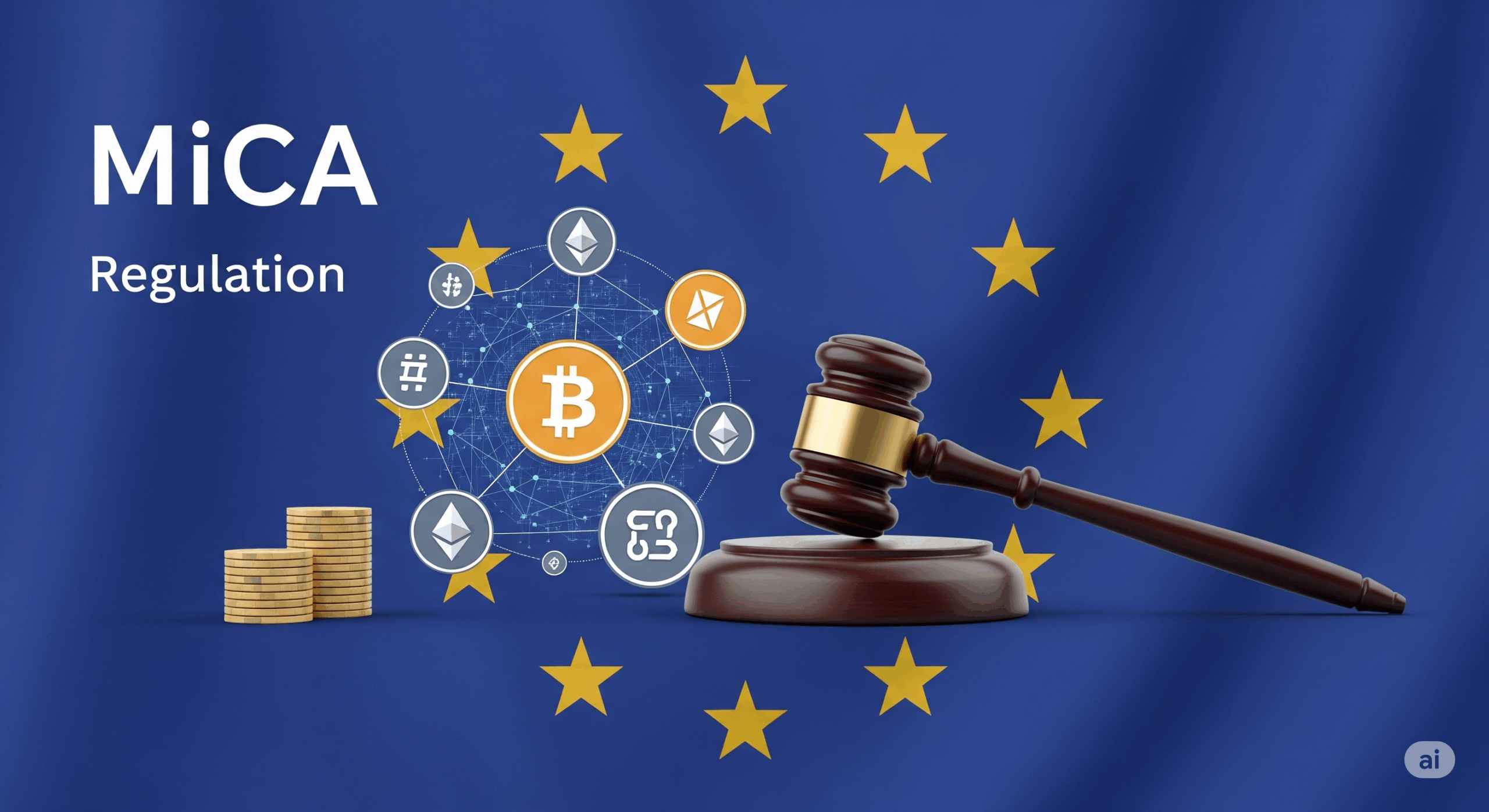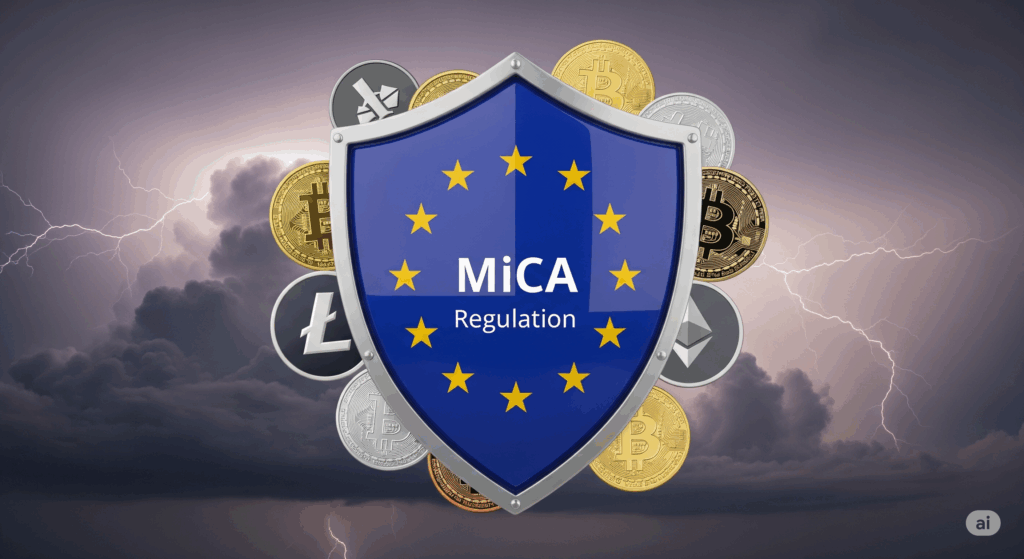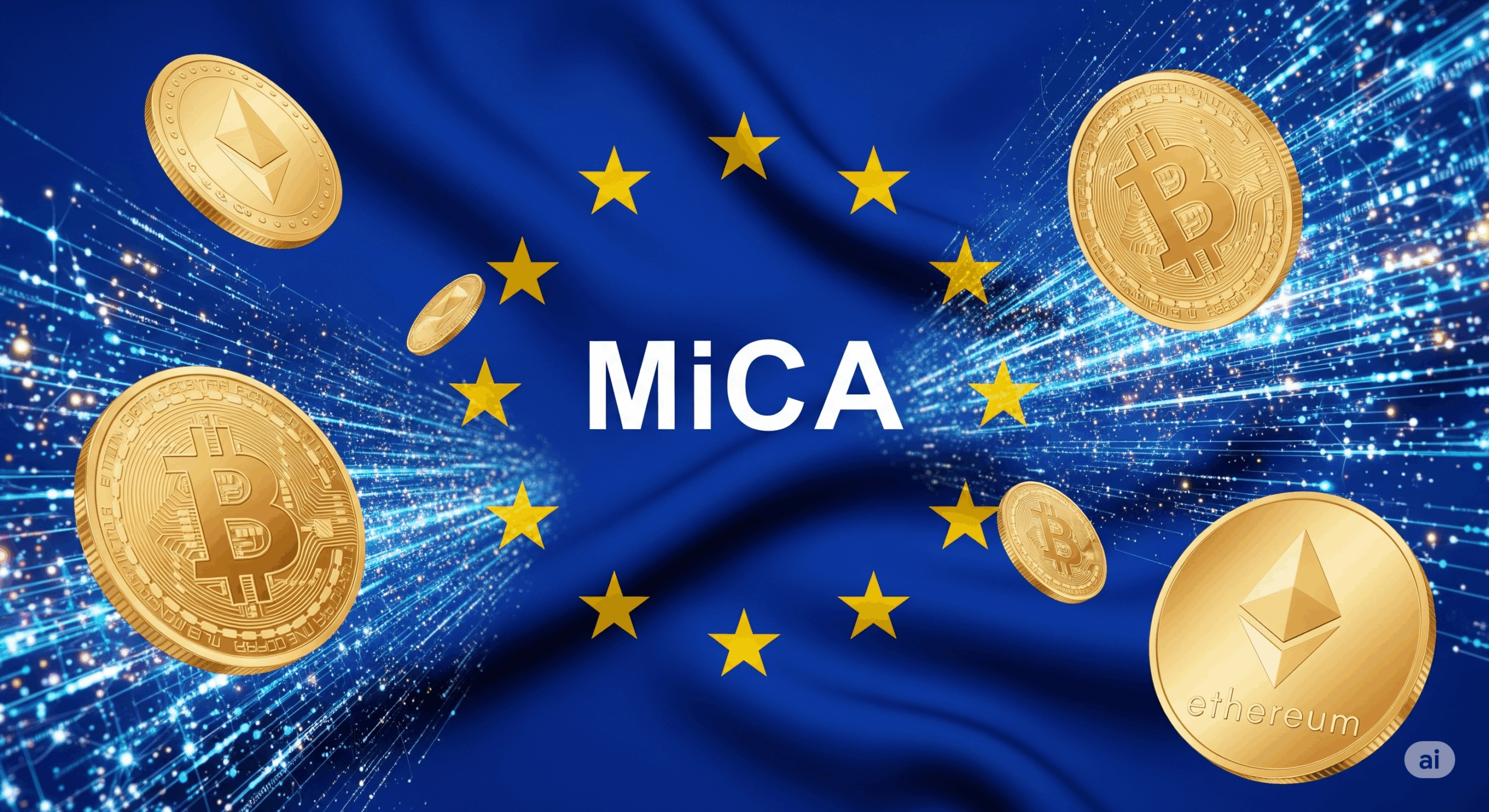The world of crypto was a jungle. A lawless digital Wild West. Investors navigated without a compass. Then, Europe decided to act. It introduced the MiCA regulation. This framework radically changes the rules of the game. It brings order, security, and clarity. Thus, it positions Europe as a global leader in crypto regulation. Let’s explore this major legislation together.
What is the MiCA Regulation?
MiCA stands for “Markets in Crypto-Assets.” It is a comprehensive European regulation. Its goal is to harmonize the legislation for crypto-assets. The European Union wants to create a single, secure market. Previously, each member state had its own rules. This fragmentation created uncertainty. MiCA puts an end to that. The regulation establishes clear requirements for all actors. It protects consumers. It also ensures financial stability. Finally, it encourages responsible innovation.
Why Was MiCA an Absolute Necessity?
Before MiCA, the crypto market lacked protection. Scams and fraud were common. Extreme volatility threatened small investors. Furthermore, the absence of a clear legal framework held companies back. Serious projects hesitated to launch. Institutional investors stayed away. Europe risked losing its monetary sovereignty, especially with the rise of private stablecoins. Therefore, MiCA addresses an urgent need for structure. It provides the confidence necessary for the sector’s development.

The Fundamental Pillars of the MiCA Regulation
MiCA is built on several solid pillars. Each pillar addresses a specific aspect of the market. Together, they form a complete regulatory shield.
A Clear Classification of Crypto-Assets
First, MiCA clarifies what a crypto-asset is. The regulation then defines three main categories. This classification is essential for applying the right rules.
- Asset-Referenced Tokens (ARTs): These tokens aim for a stable value. They refer to a basket of assets. This basket can include several official currencies or commodities.
- E-Money Tokens (EMTs): They are very similar to ARTs. However, they refer to a single official currency. For example, a “euro stablecoin” is an EMT.
- Other Crypto-Assets: This category includes all other tokens. It covers “utility tokens.” Bitcoin or Ether also fall into this box under MiCA.
Strict Rules for Token Issuers
Next, MiCA imposes obligations on crypto creators. Any entity that issues a crypto-asset must comply. The central requirement is the publication of a white paper. This document must be clear, fair, and not misleading. It must contain all essential information about the project. For instance, details about the issuer, the project, rights, and risks. For ARTs and EMTs, the requirements are even stricter. Their issuers must obtain specific authorization. They must also prove they hold sufficient reserves. These reserves guarantee the value of the issued tokens.
Mandatory Authorization for Service Providers (CASPs)
The regulation also governs intermediaries. These actors are called “Crypto-Asset Service Providers” (CASPs). They include exchange platforms, wallet custodians, and advisors. To operate in the EU, they must obtain a CASP license. This license is issued by the competent national authority. Once obtained, it acts as a European passport. It allows the provider to offer its services throughout the EU. CASPs must follow strict rules. They must protect their clients’ funds. They must act honestly and professionally. Additionally, they must have clear policies on conflicts of interest.
Enhanced Consumer Protection
Investor protection is at the heart of MiCA. The regulation requires actors to provide transparent information. No more aggressive marketing and misleading promises. The risks must be clearly explained. Furthermore, MiCA establishes rules against market abuse. Insider trading and price manipulation are now prohibited. This applies to all crypto-assets. Platforms must implement surveillance systems. Thus, the market becomes fairer and safer for everyone. Consumers also have the right to complaint handling mechanisms.

The MiCA Implementation Timeline
MiCA is not coming into force all at once. Its application is gradual. This gives the market time to adapt.
- June 2024: The rules concerning stablecoins (ARTs and EMTs) became applicable. This is the first major step in the timeline.
- December 2024: All other provisions of MiCA will come into application. This includes the authorization of CASPs and rules for other crypto-assets.
There are transitional periods, particularly for actors already registered at the national level. They have until mid-2026 to obtain the full CASP license.
Who is Directly Affected by MiCA?
MiCA’s impact is very broad. Practically the entire crypto ecosystem in Europe is affected.
- Crypto-asset issuers: They must write white papers and, for some, get authorization.
- Exchange platforms: They must obtain a CASP license and follow strict rules of conduct.
- Wallet providers: They are also CASPs and must protect their clients’ assets.
- Investors and traders: They benefit from better protection and more transparency.
- Traditional companies: Those wanting to use crypto must ensure they work with MiCA-compliant partners.
What MiCA Does Not Cover (For Now)
It is important to note MiCA’s limitations. The regulation does not cover everything. Decentralized Finance (DeFi) is largely excluded, at least when there is no identifiable intermediary. Unique Non-Fungible Tokens (NFTs) are also excluded. However, the European Commission is required to produce reports. It will assess the need to regulate these areas in the future. Central Bank Digital Currencies (CBDCs) are also outside MiCA’s scope.
A New Era for Crypto in Europe
In conclusion, MiCA is a regulatory revolution. The regulation transforms a chaotic market into a structured sector. It provides unprecedented legal certainty. For consumers, it promises fewer risks. For businesses, it opens the door to innovation within a clear framework. The European Union is positioning itself as an attractive territory. It may well set the global standard for crypto-asset regulation. The digital Wild West is over. A new era of trust and growth begins.



